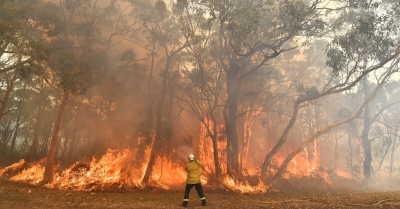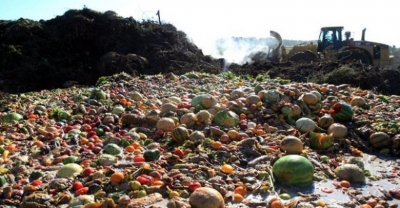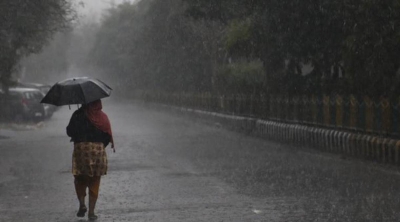How do plants and animals in region that experience forest fires survive or cope?

Forest fires occur in many regions of the world. In fact, some of you may have witnessed them. They are not just inevitable but even necessary for several reasons.
The benefits of forest fires
Forest fires have been an integral part of the natural forest environment, and play an important role in keeping the ecosystem going. For example, these fires help clear dead plants and allow for new ones to grow in their place. Seeds of certain plants germinate after a fire that breaks open their outer covering. Trunks of trees falling after a fire host several types of insects and reptiles, which in turn become feed for birds and animals. Animals escaping fire move to other places, resulting in the distribution of such species.
Plants and animals cope / survive
Since plants cannot move when fire envelops their surroundings, they have other means for survival. One of them is through the insulation that soil offers. Some plants (re)grow from underground stems and roots protected by the soil. Some trees are protected from damage and death by the thickness of their bark.
Many animal species (and even plants) are said to reproduce during the wet season or when the chances of fires are low. This offers the population a higher chance of survival. Many animals have a strong sense of smell that helps them detect smoke from far so they can move to safer places. Some seem to be able to hear the sounds of fire, which gives them adequate time to leave the spot. Most animals, especially large ones, flee a burning place and move to higher ground, or even to an already burnt place. However, not all animals move. Some find abandoned burrows to seek refuge in. This also has another benefit-protection from raptors that come looking for hapless animals. Animals have found ways to cope even after a fire. Since food resources become scarce after a fire, some species have adapted themselves to suppress energy use, cutting down the need for seeking food.
The situation today is grim
While it is true that forest fires are necessary and beneficial, the current scenario is not very encouraging. Due to climate change and global warming, the intensity and the incidence of forest fires across the globe have been increasing. This I means that neither plants nor animals have enough time or means to recover from a forest fire. In the long run, it could push them to extinction in a world that might no longer resemble the one their ancestors inhabited.
Picture Credit : Google



